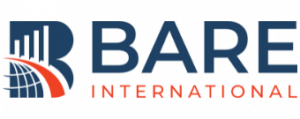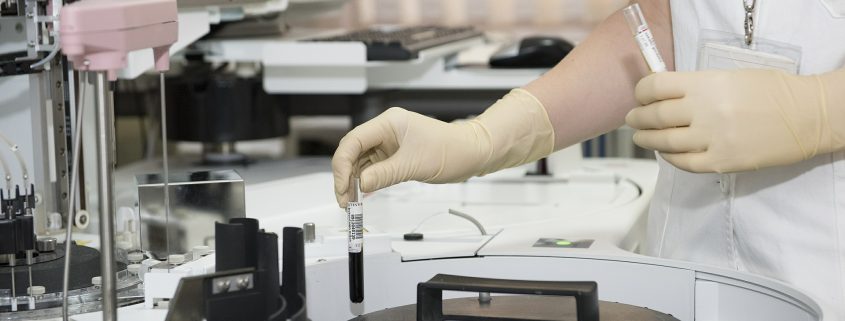Engaging the Customer in Healthcare
BARE Shares an article from Customer Think – Engaging the Customer in Healthcare…
‘The healthcare industry has historically been behind the times in customer service and customer experience. Finance, banking, and consumer segments have long ago adapted, using innovations and changing mindset to meet new generation of consumers’ demand for omnichannel service, immediate access, and convenient apps. Chief executives in most industries have come to accept the reality that younger generations of consumers demand more on all fronts. Millennials are more likely to compare goods and services through peer reviews and social media. Conveniences in areas like banking, for example – which has responded to a heightened level of customer awareness with convenient online services, smartphone apps, and intelligent self-service tactics – have raised the bar for all industries, and healthcare marketers must respond.
The healthcare industry however, is one of the last to consider this new customer-centric imperative. Providers remained until recently firmly entrenched in convoluted service that is difficult to understand, pricing that is not transparent, and what healthcare education there is, tends to be more reactive rather than proactive.
That’s all starting to change. “The expectation of the consumer is much higher because I can pull my cell phone out of my pocket while I’m standing in line, and I can check by bank balance, or buy a pair of shoes. But I may not be able to see if my claim has been paid, or make an appointment with my doctor, “said Laurie Ringlein, Practice Director at Top Tier Consulting. “Because other industries have been in the forefront in terms of being able to put those interactions in the palm of a consumer’s hand, healthcare is a little behind the curve. But they are starting to make investments to close that gap. ”
Those transformational changes come slowly – not because healthcare organizations are any less savvy, but because healthcare is just a lot more complex than any other industry. “The complexities in this industry are difficult for consumers to understand,” said Tracy Donegan, Practice Director at Top Tier. “In this industry you have price, charge, and fee, and these are three different things. Trying to get a handle on the patient’s financial responsibility is difficult, and there are many layers of complexity that need to be addressed. We also have a whole host of security and privacy concerns around protected health information that adds to the complexity of what other industries are straight forward transactions. ”
Donegan notes that “in terms of closing the gap on patient engagement, there are many different ways they are doing it. From the financial perspective, we have patient-friendly billing, enabling easier to understand patient bills and more downline options for bill presentment and payment. From a disease management perspective, we have expanded Internet portal functionality to help the patient manage their diseases, like providing prescription reminders, scheduling an appointment directly, and viewing ER waiting times online – there are a lot of different ways they are closing the gap. ”
Healthcare organizations get the word out
There are two parts to creating a new Customer Experience mindset – changing the way you think about and respond to customer needs, and then telling the world what you’re doing. Other industries – auto insurance for example – are very good at blowing their own horns about how great their customer service is. “Healthcare organizations aren’t going to be using cartoon characters or NFL football stars to advertise their products, because healthcare is a different industry. Because of the differences in privacy and security, the complexity of healthcare transactions, and the personal healthcare data that health insurance companies have, they don’t want to minimize that by having football stars and talking lizards chatting with you about your healthcare,” Said Ringlein. What they are doing though, is education-based marketing and thought leadership in a very personal space.
Rather than the straight-on commercial advertising favored by auto insurers, healthcare companies instead are engaging in a more subtle type of marketing that involves publishing full-length, often educational feature articles, usually unbiased and vendor-neutral, in consumer-focused and healthcare industry publications. “They are very much getting published in magazines that focus on the healthcare industry,” said Ringlein. “So if they are improving their Net Promoter Score, or leading the industry in consumer experience, they are publishing that to make sure that the people who they are doing business with – whether it is businesses or end user consumers – are getting that messaging in all of the channels they are looking at.”
This type of content marketing – sometimes referred to as “brand journalism” – appeals especially to millennials who may not trust traditional advertising, and are more willing to take time to read an article or do additional research before making a purchase. “Helping people really understand what they need, when they need it, and what they don’t need, through that educational process and literacy process, is a major focus,” said Ringlein.
“Education flows from a reactive to a proactive basis,” said Donegan. “Being sick is so pervasive in peoples’ lives, so getting them engaged is not just about the hospital getting better scores. It’s about the overall holistic wellness of a patient or member.”
What’s driving the change in healthcare consumer engagement
The customer experience in healthcare is no longer a one-directional experience. “What most healthcare organizations are trying to do is engage with millennials how they want to be engaged with. They are surveying different populations and trying to understand what channels people want to use, what their communications preferences are, how they want to receive information and in what ways they do not ever want to hear from us,” said Ringlein. “That means having omnichannel communication, and multiple ways to connect based on preference.”
The slow pace of change in customer engagement is not for lack of trying. Healthcare, like many large bureaucratic organizations, has always been difficult to maneuver because of the sheer complexity involved.
“The largest driver in healthcare companies moving towards engaging consumers differently, is that consumers in this day and age are empowered and perpetually connected,” said Ringlein. “That causes not only their voices to be amplified, but it very much causes them to have higher expectations of their healthcare company. They expect their healthcare organizations to engage in the same way that banks, retail, and even airlines engage with their consumers on different levels, in some ways better than healthcare organizations do.”
Healthcare organizations are making big investments in making the shift towards greater and more efficient consumer engagement. One area in particular is in promoting healthcare literacy. As opposed to traditional one-directional advertising, the idea behind literacy-based initiatives is to engage directly with healthcare consumers to ensure that they become educated beyond what traditional advertising could possibly do. This approach helps consumers understand the complex financial components of healthcare, as well as providing more proactive information on wellness, while at the same time putting more tools in consumers’ hands.
Reaching the tipping point
There’s no doubt that a significant amount of data technology, mobile technology, and analytics is involved in the emerging movement towards customer engagement in healthcare, and like technology applied to any industry, there is a tipping point. First generations of technology tend to be IT-driven and inflexible. For example, first-generation customer service technology used things like IVR, but the strict, script-based models that were first used were created to be a technological solution to a human problem, and failed to take into account the omnichannel needs of the new generation of consumers. They worked on the assumption that most problems should be solved automatically, and they lacked an easy exit to a human agent, giving rise to the phrase “voicemail hell,” and the consumer perception that automation is inferior to human interaction. The tipping point occurs when the technology and automation advances significantly enough that the consumer decides that automation is at least equivalent to, and in some cases superior to, human interaction. Healthcare is just now beginning to surpass that tipping point, and the result is a more engaged, more educated consumer that is better equipped to handle the rapidly changing face of healthcare in America.’
After working with hundreds of hospitals, clinics, HMPs, labs, and physicians’ offices, BARE understands how ensuring a high standard of care is absolutely essential for any healthcare facility. BARE’s discreet, non-invasive Hospital & Healthcare check-up programs assess and provide data to help improve quality standards and maintain responsible patient care. Programs tailored to an organization’s unique needs reveal actionable insight into increasing patient retention, improving new patient experience, and protecting against liability issues. Find out more here.
This post is also available in: Spanish



